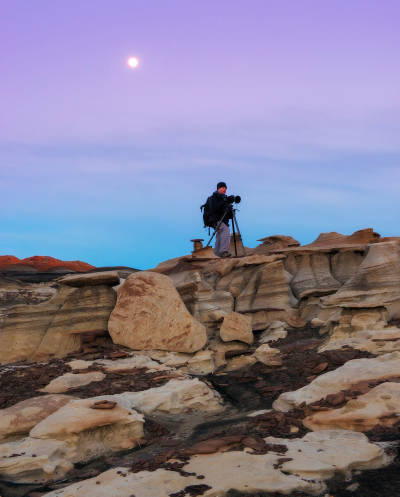A rite of passage for any ambitious landscape photographer is to shoot the iconic destinations of Iceland. The landscape provides for endless creativity in both summer and winter. Mountains, ice, aurora, abstracts — major movies are shot here when needing that otherworldly feeling (Tom Cruise rented a whole glacier when filming Oblivion).

Iconic church in western Iceland. Nikon D810, 14-24mm, 24mm, f16, 1/8 sec, ISO 64
My own walkabout to Iceland took place this past November, and apart from a one-day delay due to blizzard, hurricane force winds, and sandstorms that would strip the paint off our car, we had cold but pleasant weather.
Our first stop was Kirkjufell, an oft-photographed teepee mountain on the western peninsula. With two waterfalls cascading before the foot of the mountain, a typical shot is of the waterfalls, the mountain, and something interesting like aurora or a colorful sunset as a backdrop. We lucked out with some great ice formations in the water, but missed a raging sky.
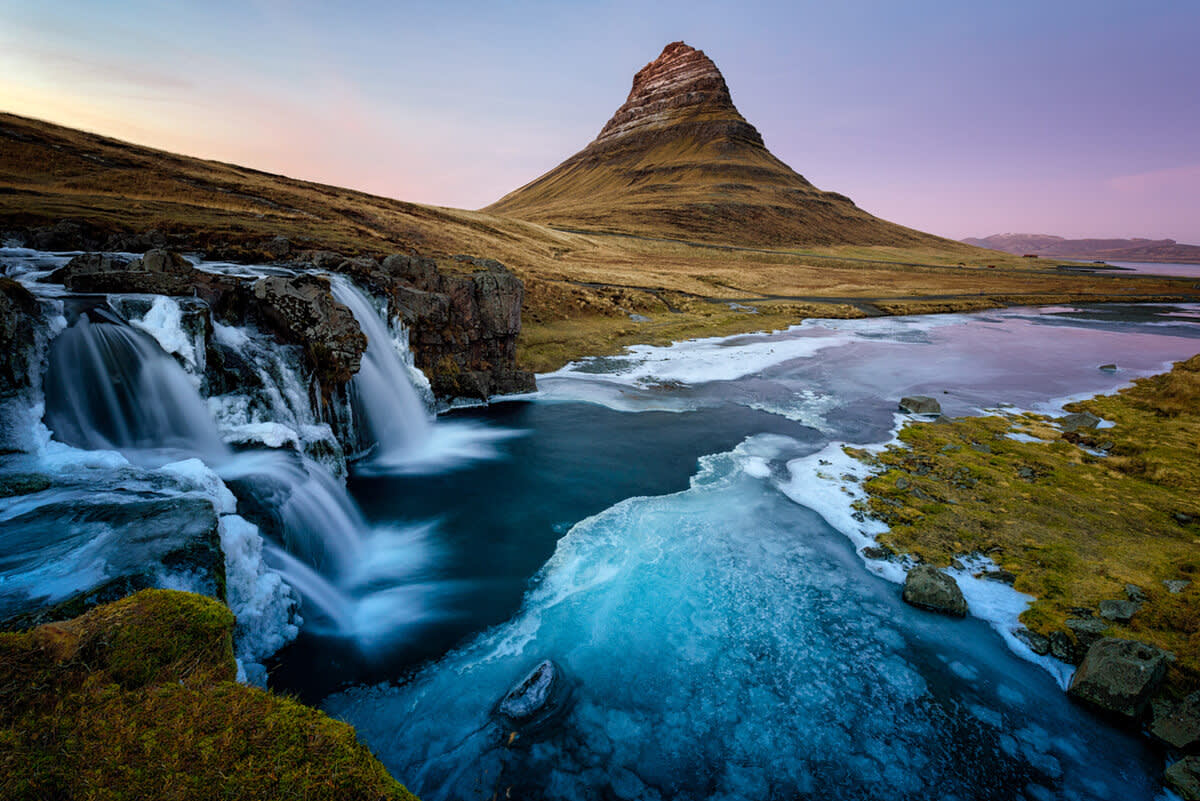
Kirkjufell with some ice. Typically photographed with raging sunsets or blazing auroras, ice is nice too. Nikon D810, 14-24mm, 14mm, f22, 1.6 sec, ISO 80
We were stuck up north for a few days near the Goðafoss waterfall. Shooting at waterfalls calls for a lot of patience and really great soft cloths to keep a clear lens. Most of my close-up shots are useless as the skies were grey and the waterfall was raging so much that it made for a muddy complexion and armies of water spots. Pulling back and going wide made for the only salvageable shot.

Goðafoss, or “waterfall of the gods” in northern Iceland. Nikon D810, 14-24mm, 14mm, f22, 1 sec, ISO 31
After a few days wait, we were at the east coast of Iceland at another iconic mountain called Vesturhorn. Ocean meeting a black sand beach guarded by a tremendously imposing mountain only needs a blazing aurora reflected in the water to create an overwhelming picture of perfection. I didn’t get that shot. But the patterns and mountain created a few days worth of exploring, and we came back to this spot numerous times under varying conditions.
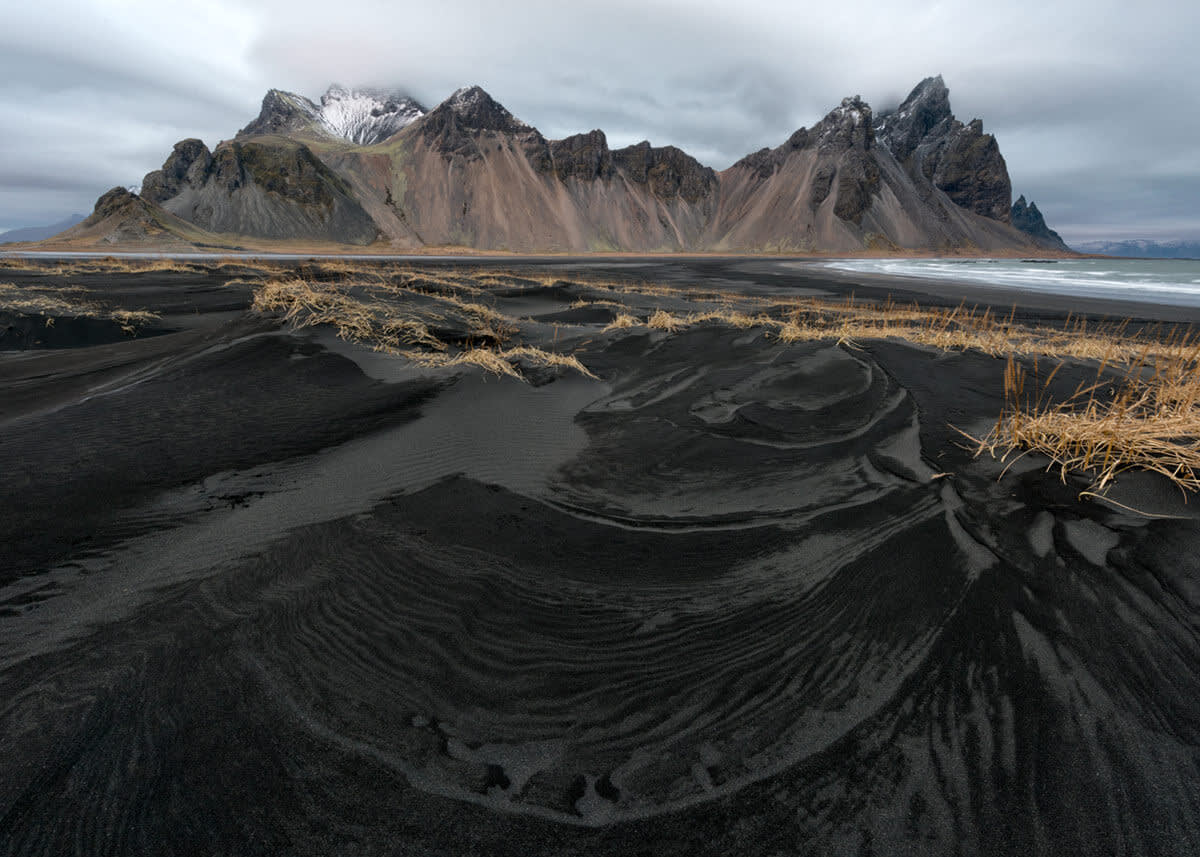
Vesturhorn with black sand beach. Nikon D810, 14-24mm, 14mm, f18, 1 sec, ISO 200
Further down the coast, at the end of the Jökulsárlón glacier is a lagoon filled with ice broken off the glacier’s end that drifts in and out of the mouth of the lagoon and into the ocean. We spent a few shooting sessions here, each time with different weather and different light, and each time with its own technical and compositional challenges. The ice moves deceivingly quickly and makes both panoramas and focus-stacking difficult. And it’s hard to compose an interesting shot of what appears as a big jumbled mess of ice. But perhaps through osmosis or sheer luck, I found a pleasing dialog between the small ice in the lower right to the medium ice in the middle left to the larger berg in the top right, all with an understated sky to complement the foreground.

The chaos of the Jökulsárlón glacial lagoon. Nikon D810, 24-70mm, 35mm, f14, 1/5 sec, ISO 64
Focus-stacking is the technique of taking a number of pictures of the same scene but at different focus points through the image, and then blending the photos together by keeping only the in-focus bits. Think of photos with nice flowers in the foreground and majestic mountains in the background; if you focus on the flowers, the mountain is out of focus. Focus on the mountain, and the flowers are out of focus. In the next picture, I wanted to accentuate this amazing shelf of ice sticking out of the lagoon. I used my 14-24mm lens at 14mm, and placed it very close to the ice shelf. In focusing, the ice shelf was sharp but the distant ice, mountain and clouds were not. So I took a second shot in the exact same place, but focusing on the far ice. I then blended these two photos together to create sharpness throughout the whole image.

Ice breaks in a lagoon at the foot of the Jökulsárlón glacier. Nikon D810, 14-24mm, 14mm, f14, 1/6 sec, ISO 200. two-shot focal blend
After the ice leaves the lagoon, it heads out to sea, where it is met by waves, currents and the tides. Because Iceland is very volcanic, the beaches are typically black sand, and provide for a very creative contrast to the white of the ice. I really enjoy taking ocean shots around rocks, coastline, cliffs, lighthouses, etc. But this is the first time I’ve photographed ice! The techniques are really no different. A shutter speed of 1.6 seconds was used to get the curls in the water, and a graduated neutral density filter was used to darken the sky to keep the entire scene within the dynamic range of the settings.
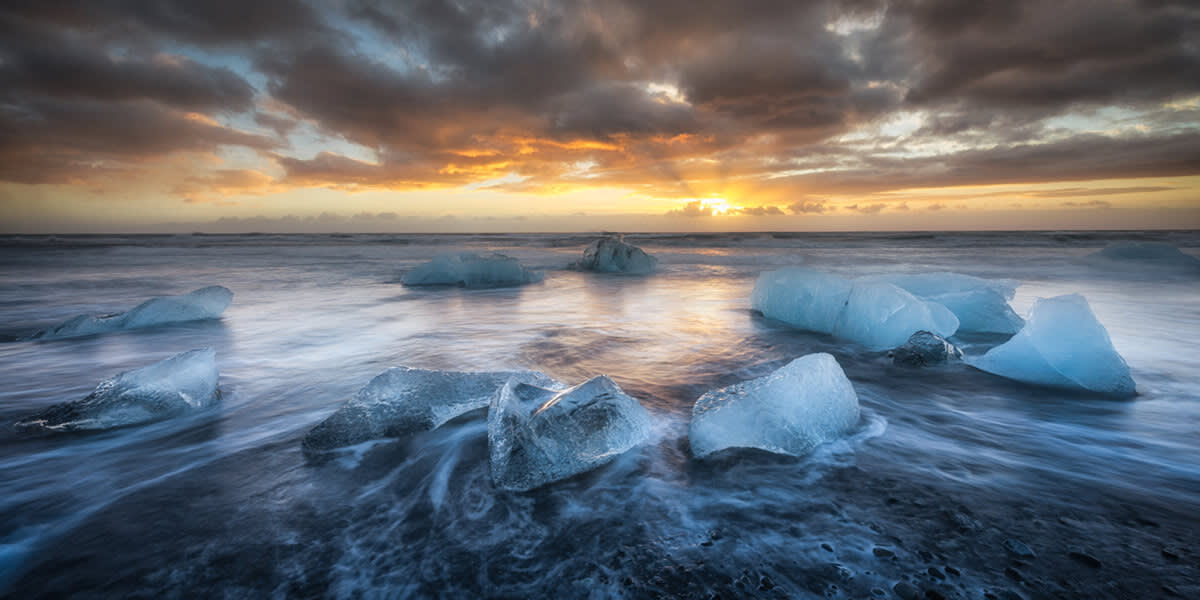
The sun peeks over morning clouds into a huddle of ice shards. Nikon D810, 14-24mm, 14mm, f18, 1/4 sec, ISO 31
I kept the ND filter on my lens and moved slightly down the beach to a great chunk of ice that I hoped would give me a great setting for the sunrise. To get a bit more sun rays, I set the aperture to f22 and again shifted the gradual ND filter down to keep the sky from getting blown out (“blown out” means having a part of your picture so bright that the sensor is unable to capture any color at all, resulting in all pixels in that area being white. When you then edit or print the photo, there are no pixels to work with and that area will look like a white blob). The rest of the photo is untouched.

Golden light bathes an otherwise blue chunk of ice. Nikon D810, 14-24mm, 24mm, f22, 1/2 sec, ISO 31
A night-time shot brightened to accentuate the aurora. This was my first time seeing the aurora borealis. It begins with a faint brushstroke in the sky and an exclamation, “Is that a cloud?” Then the green sets in, and the tips begin to form more vertically in a needle-like formation. That is usually followed by “look over there!” and a rainbow of aurora across the sky. Then it begins a fairly quick waterfall-type movement, and if you’re lucky, a majestic swirl of nature’s brush like the one below.
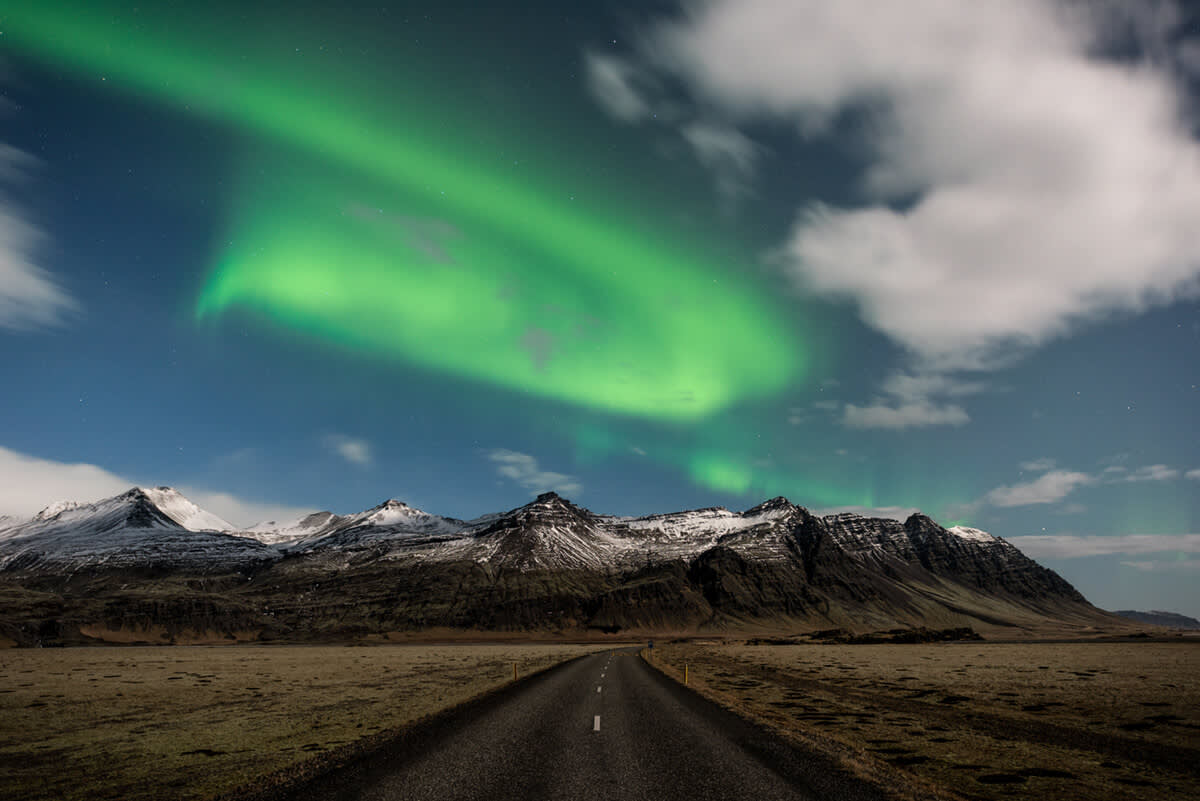
Aurora swirl above the mountains of eastern Iceland. Nikon D810, 14-24mm, 14mm, f2.8, 10 sec, ISO 200
Grandiose vistas, gnarled ice patterns and majestic aurora are all fantastic, but sometimes the shot is quite literally at your feet. At dawn on the beaches of Vesturhorn, an overnight dusting of snow accentuated the wind patterns of the sand into some amazing patterns. I had to choose not only an interesting pattern, but ensure the entire shot was in focus because the depth of field was very shallow. This is a two-shot focal blend using the same technique explained above for the larger shot of the ice lagoon.
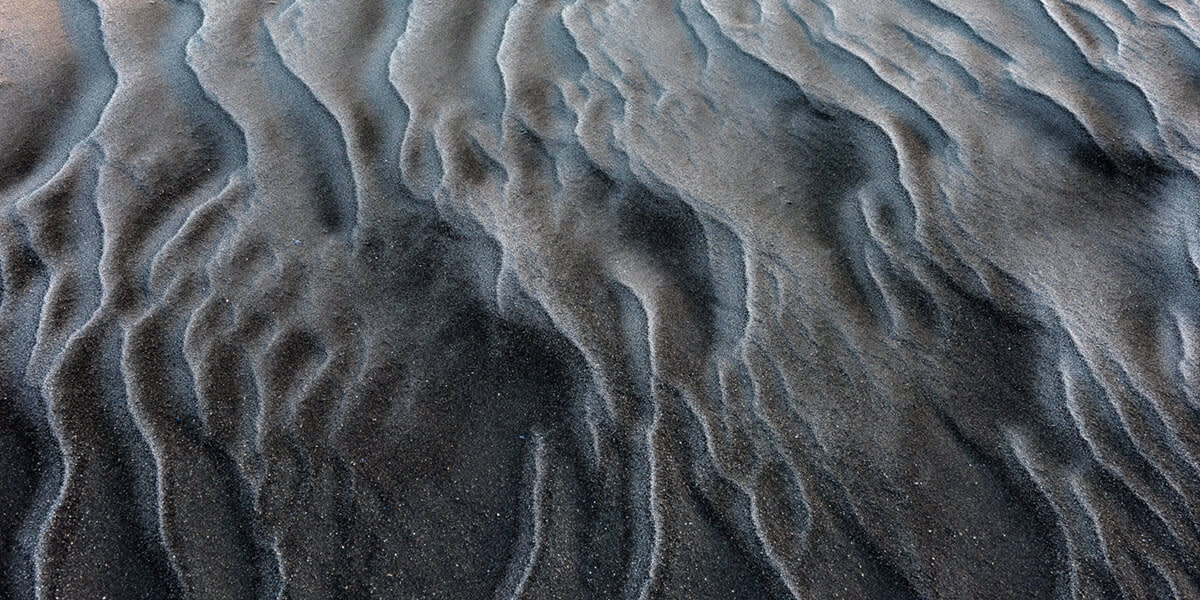
Abstract frozen black sand beach. Nikon D810, 24-70mm, 42mm, f11, 1/80 sec, ISO 400.Two-shot Focal Blend.
The final day of our expedition had an amazing sunset over the glacier and lagoon. As the sky was blowing up in a nuclear kaleidoscope, I was running with all my gear through deep snow to try to get an unobstructed view of both the sunset, mountains and lagoon. Because Iceland is so far north, sunset lasts quite a bit longer as it skims the horizon, and I needn’t have rushed so much. But the display was amazing and I even had to lower the saturation of this shot a bit to avoid overwhelming the final image!

Sunset at the foot of the glacier. Nikon D810, 14-24mm, 24mm, f14, 1/15 sec, ISO 200
In my enthusiasm, I found I had wandered about three miles away from my starting point, leaving the only footprints for quite a stretch of the landscape. So I was quite surprised to see this amazingly pristine and tranquil scene playing itself out behind me. I set my camera down to take a picture, but it didn’t quite hold the entire zen quality of what I was feeling. Instead, I took a three-shot panorama to capture the full simplicity of the untracked new snow, the dunes and the wispy remnants of an amazing experience.

Panorama of new snow on hills of Iceland at sunset. Nikon D810, 24-70mm, 32mm, f14, 1/4 sec, ISO 200. 3-shot panorama
